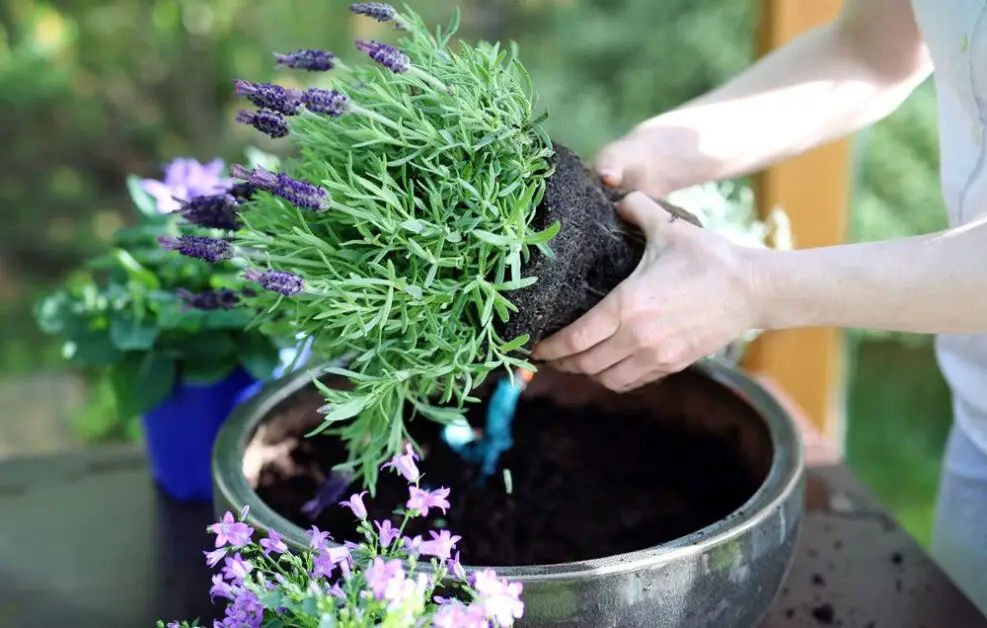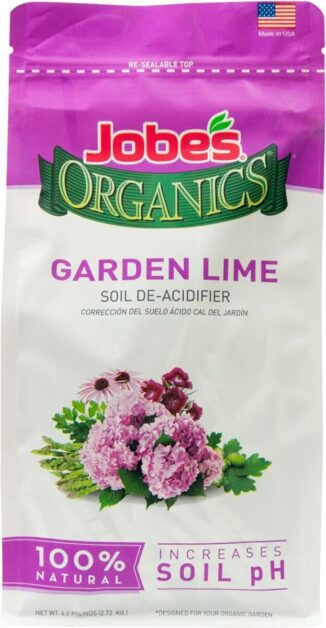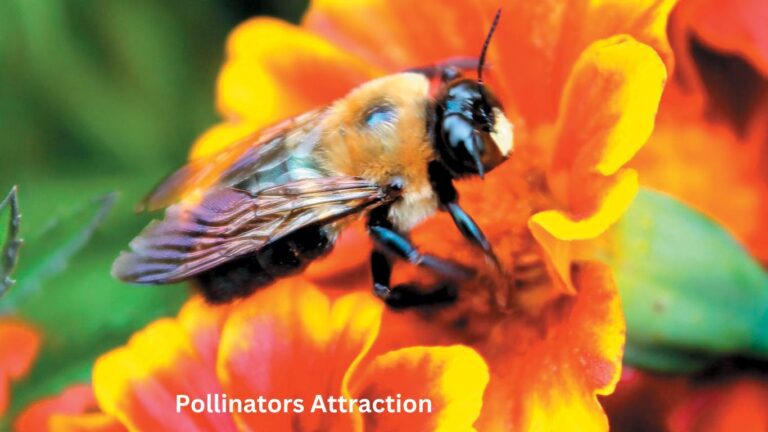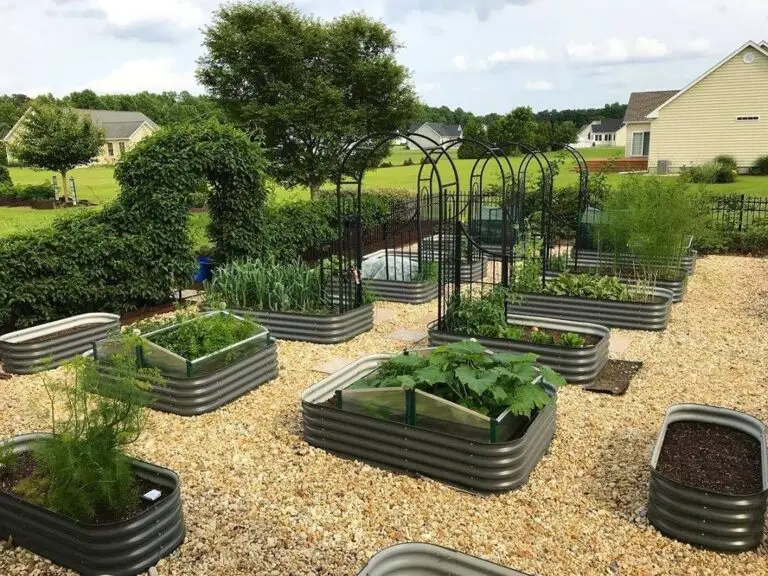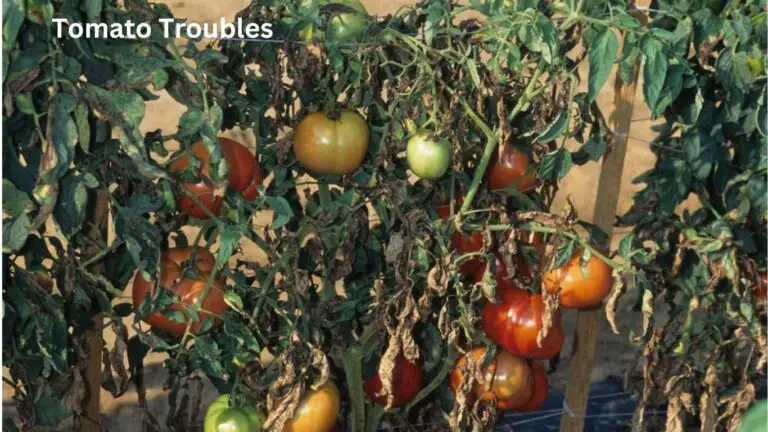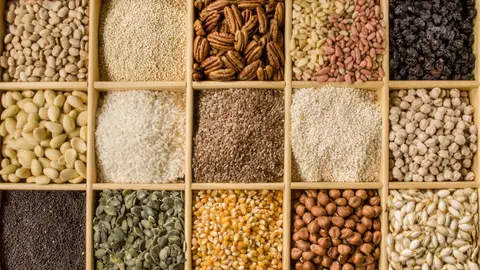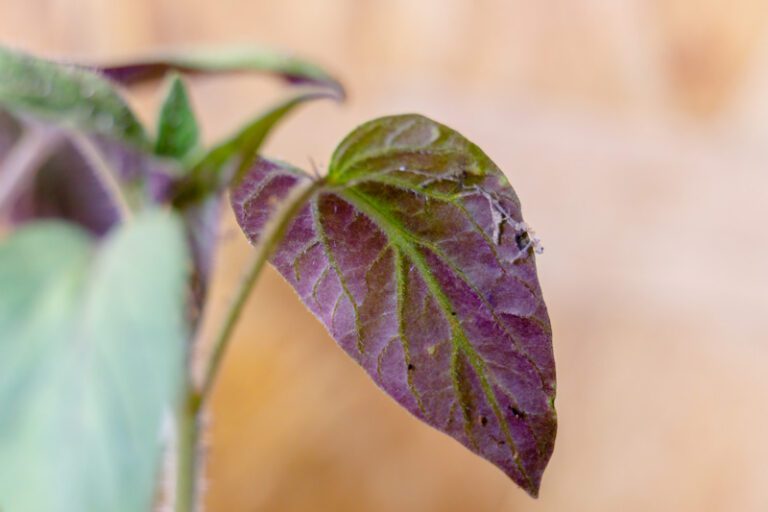Container Gardening: A Guide to Growing Plants in Containers
Are you ready to embark on a gardening journey that defies traditional boundaries? Container gardening might just be your ticket to a flourishing green oasis, even in the tightest of spaces. Picture this: lush herbs cascading from window boxes, vibrant flowers adorning your patio, and plump vegetables thriving on your balcony. But before you dive in, let’s explore the ins and outs of this versatile gardening method. From selecting the perfect containers to mastering soil composition and watering techniques, this guide has you covered. Whether you’re a seasoned pro or a novice with a green thumb itch, container gardening offers endless possibilities. Get ready to transform any nook or cranny into a vibrant botanical haven!
Table of Contents
Benefits of Container Gardening: Exploring the Advantages of Growing Plants in Containers
Container gardening offers numerous benefits that make it an attractive option for plant enthusiasts.

- Space Utilization:
- Suitable for small areas like balconies, patios, or windowsills.
- Ideal for urban dwellers with limited gardening space.
- Allows enjoyment of plants and a connection with nature.
- Flexibility and Mobility:
- Easy rearrangement of plants based on weather conditions or aesthetics.
- Provides adaptability and aesthetic appeal.
- Control Over Environmental Factors:
- Regulate soil, water, and sunlight conditions specific to each plant.
- Minimizes risks of over/under watering, excessive sunlight, or nutrient deficiencies.
- Protection Against Diseases and Pests:
- Containers reduce soil-borne diseases transmission.
- Better plant health and productivity.
By isolating plants in individual containers, any potential infestations or diseases can be contained and addressed promptly, safeguarding the overall garden health.
Selecting the Right Containers: Factors to Consider for Successful Container Gardening
When it comes to container gardening, selecting the right containers is crucial for the success of your plants. Factors such as size, material, drainage, and aesthetics must be considered to ensure the optimal growth and health of your container garden.

- Size Matters: Choose containers proportionate to your plant’s size to ensure ample root space. Larger plants need larger containers, while smaller plants thrive in compact ones. Matching container size to plant size prevents root crowding and promotes healthy growth.
- Material Consideration: Opt for containers based on plant needs and environmental factors. Terracotta pots suit plants craving drier soil, facilitating moisture evaporation. Plastic or resin containers retain moisture, ideal for plants needing consistent moisture levels. Wood and metal containers add aesthetic flair to your garden while serving functional purposes.
- Drainage is Key: Ensure containers have proper drainage to prevent waterlogging and root rot. Look for pots with bottom drainage holes or use trays to catch excess water. Good drainage promotes healthy roots and prevents water-related issues.
- Aesthetic Appeal: Enhance your space with visually pleasing containers that reflect your style. Consider the color, design, and material to complement your garden or patio. From classic terracotta to modern metal, choose containers that elevate your garden’s aesthetics while nurturing your plants.
By considering these factors – size, material, drainage, and aesthetics – you can select the right containers that will promote the successful growth and development of your container garden. The next step after container selection is understanding the importance of soil and selecting the ideal potting mix to provide the necessary nutrients and support for your plants.
Having utilized the HOMENOTE Plastic Planters for my indoor and outdoor gardening needs, I found them to be incredibly versatile and practical. The various sizes available allowed me to accommodate a wide range of plants, from small herbs to larger flowering plants, with ease. Their lightweight construction made them easy to move around, and the multiple drainage holes ensured proper water drainage, preventing waterlogging and promoting healthy root growth.
While the plain design may not be the most aesthetically appealing, their durability and functionality outweigh any cosmetic concerns. Overall, these plastic planters have been a reliable choice for my gardening endeavors, offering convenience and practicality at an affordable price point.
- Multiple Sizes: Comes in various sizes to accommodate different plant types and sizes.
- Lightweight: Easy to move around and handle, making it suitable for indoor and outdoor use.
- Drainage Holes: Equipped with multiple drainage holes to prevent waterlogging and promote healthy root growth.
- Durable: Made of sturdy plastic material, ensuring long-lasting durability and resistance to weather elements.
- Versatile: Ideal for a wide range of plants, including flowers, herbs, vegetables, and succulents.
- Plastic Material: Some users may prefer planters made from more sustainable materials.
- Limited Aesthetic Appeal: The plain design may not appeal to those looking for decorative planters.
- Potting Mix Not Included: Requires separate purchase of potting soil for planting.
- Potential Color Fading: Prolonged exposure to sunlight may cause color fading over time.
- Drainage Tray Not Included: Requires a separate drainage tray to catch excess water and prevent mess.
Choosing the Ideal Potting Mix: Understanding the Importance of Soil for Container Plants
The choice of potting mix plays a crucial role in the success of your container garden. Unlike traditional gardens, plants in containers rely solely on the soil provided within the confined space. Therefore, understanding the importance of soil composition is paramount to ensuring healthy and thriving plants.
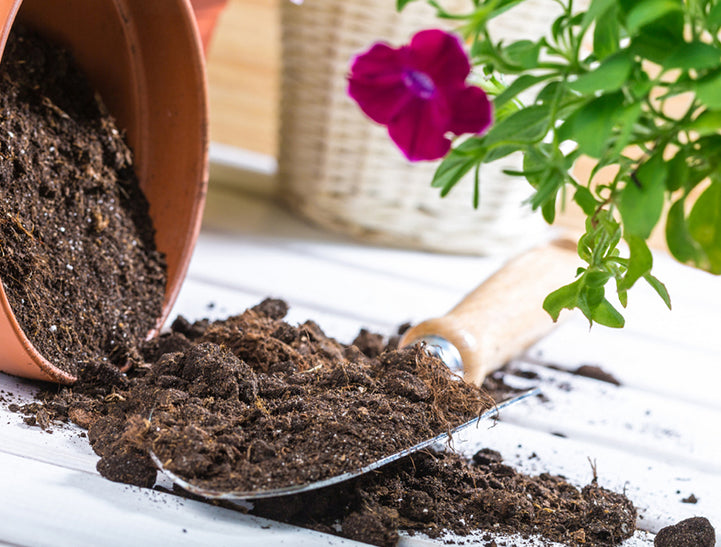
- Vermiculite: Derived from mica rock, vermiculite absorbs water and nutrients, helping maintain moisture levels in the container. It also contains essential elements like magnesium, potassium, and calcium.
- Perlite: Made from volcanic rock, perlite creates tiny air pockets between soil particles, ensuring oxygen reaches plant roots. It doesn’t add nutrients but improves aeration.
- Peat moss: Harvested from bogs, peat moss holds water and air. While slow to decay, it contributes minimal nutrients. Its pH ranges from 3.5 to 4.5.
- Limestone: Added to counter peat moss acidity, limestone (dolomitic or calcitic) provides calcium. Dolomitic limestone also contains magnesium.
- Coco Peat or Coir: Recycled coconut husk material that holds more water than peat moss and provides aeration.
- Ground Fir: Sometimes included for additional organic matter.
Remember to adjust these components based on your specific plant requirements, and you’ll have a thriving container garden!
Having utilized Jobe’s Organics Fertilizer in my garden, I am thoroughly impressed with its performance. The organic formula provided my plants with a balanced blend of nutrients, resulting in vibrant growth and abundant blooms. I appreciated the slow-release feature, ensuring sustained nourishment over time and minimizing the risk of nutrient leaching.
Additionally, the fertilizer’s organic composition enhanced soil health, promoting better moisture retention and microbial activity. While the initial investment may be slightly higher than synthetic alternatives, the long-term benefits of improved soil fertility and environmentally friendly approach make Jobe’s Organics Fertilizer a worthwhile choice for any gardener seeking sustainable plant nutrition.
Having utilized Coco Bliss Organic Perlite in my gardening endeavors, I found it to be a valuable addition to my soil mix. Its lightweight nature facilitated improved aeration and drainage, fostering optimal root development and overall plant health. I appreciated its organic composition, which aligned with my eco-conscious gardening practices. While it may be slightly pricier than conventional perlite, its benefits in promoting soil health and supporting various gardening applications make it a worthwhile investment for any gardener seeking sustainable growing solutions.
✅ Balanced Nutrients: The fertilizer provides a balanced blend of essential nutrients, including nitrogen, phosphorus, and potassium, to support overall plant growth and development.
✅ Slow-Release: Its slow-release formula ensures nutrients are gradually released into the soil, providing long-lasting benefits and reducing the risk of nutrient runoff.
✅ Enhanced Soil Health: The organic components in the fertilizer improve soil structure, moisture retention, and microbial activity, creating a more favorable environment for plant roots.
✅ Safe for Environment: Being organic, it is environmentally friendly and safe for use around children, pets, and beneficial insects.
✅ Versatility: Suitable for use on a wide range of plants, including vegetables, fruits, flowers, and ornamentals, making it a versatile option for gardeners.
✅ Easy Application: Jobe’s Organics Fertilizer is easy to apply, whether broadcasting over the soil surface or incorporating into planting holes.
❌ Availability: Depending on location, it may be challenging to find Jobe’s Organics Fertilizer in local stores, requiring online purchase or special ordering.
❌ Slow Results: While the slow-release nature of the fertilizer provides long-term benefits, users may not see immediate results compared to fast-acting synthetic fertilizers.
❌ Odor: Some users may find the organic materials in the fertilizer produce a distinct odor, although it typically dissipates after application.
❌ Nutrient Levels: Depending on the specific needs of plants, additional supplements or amendments may be necessary to address specific nutrient deficiencies not adequately addressed by the fertilizer.
❌ Storage: Proper storage is essential to maintain the effectiveness of the fertilizer, as exposure to moisture or extreme temperatures can degrade its quality over time.
❌ Application Frequency: Due to its slow-release nature, Jobe’s Organics Fertilizer may require less frequent application compared to synthetic fertilizers, but regular reapplication is still necessary to maintain optimal plant health.
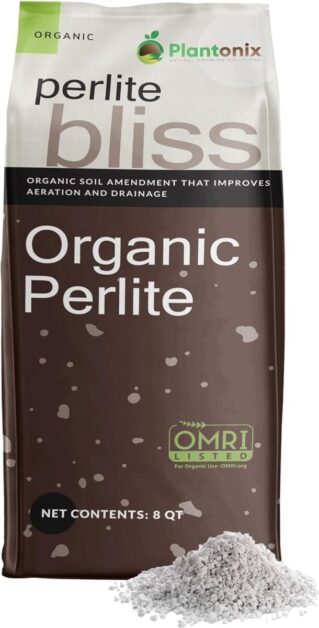
✅ Lightweight: Enhances soil aeration and drainage without adding significant weight.
✅ Improves Root Health: Supports root development by preventing soil compaction.
✅ Versatile: Suitable for various gardening applications, including container gardening and seed starting.
✅ Sterile: Free from pests, diseases, and weed seeds, ensuring a clean growing environment.
❌ Limited Availability: Availability may vary depending on location, making it challenging to find in some areas.
❌ Dusty: Handling the perlite may produce dust particles, requiring caution during application to avoid inhalation.
❌ Water Retention: While perlite improves drainage, it may not retain water as effectively as other soil amendments, necessitating frequent watering in some cases.
❌ Packaging: Some users may find the packaging insufficient for long-term storage, leading to potential moisture absorption and clumping.
Picking the Perfect Plants: Recommendations for Thriving Plants in Containers
When selecting plants for container gardening, it is important to choose varieties that are well-suited to growing in confined spaces. Compact plants with shallow root systems tend to thrive in containers, allowing for better airflow and preventing overcrowding. Additionally, selecting plants that have similar light and water requirements will make it easier to maintain a healthy and visually appealing container garden.

- Herbs for Flavor and Function: Basil, parsley, and thyme are flavorful herbs that thrive in containers. Compact and sunlight-loving, they’re perfect for small spaces like patios or balconies.
- Colorful Annuals: Brighten up your container garden with flowering annuals like petunias, geraniums, and marigolds. These vibrant blooms add a splash of color and require minimal upkeep.
- Unique Choices: For something different, try succulents or ornamental grasses. Drought-tolerant and low-maintenance, they’re ideal for busy gardeners or those with limited access to water.
By carefully selecting plants that are well-suited for container gardening, you can create a thriving and visually pleasing garden space. Remember to consider the size, sunlight requirements, and water needs of each plant before making your selections. With the right combination of plants, your container garden will flourish and provide you with a delightful oasis in even the smallest of spaces.
Watering Techniques: Essential Tips for Properly Watering Container Gardens
Proper watering techniques are essential for maintaining healthy and thriving container gardens. Containers have limited soil volume compared to traditional gardens, which means that water requirements must be carefully managed to avoid over- or under-watering. Here are some essential tips to help you water your container plants effectively:
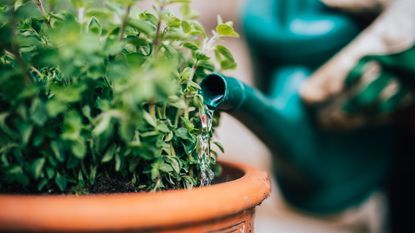
1. Monitor soil moisture: Regularly check the moisture levels in the soil by inserting your finger about an inch deep. If it feels dry, it’s time to water. However, if the soil feels moist, allow it to dry out slightly before watering to prevent waterlogged roots.
2. Water deeply and thoroughly: When watering, make sure to thoroughly saturate the entire root ball of the plant. This helps to encourage deep root growth and prevents shallow, weak roots. Water until you see it freely draining from the bottom of the container, ensuring even distribution.
Remember that different plants have different water needs, so it’s crucial to know the specific requirements of the plants in your container garden. Factors such as humidity, temperature, and sunlight intensity also influence how often and how much water your plants need. By properly monitoring and adjusting your watering routine, you can provide your container plants with the ideal hydration they need to thrive.
Fertilizing Container Plants: Understanding the Nutritional Needs of Plants in Containers
Fertilizing is an essential aspect of container gardening as it provides plants with the necessary nutrients to thrive and produce healthy foliage, flowers, and fruits.

- Nutrient Needs: Container plants rely on fertilizers for essential nutrients due to limited access to soil nutrients compared to plants in the ground.
- Fertilizer Types: Choose between organic and synthetic fertilizers. Organic options are derived from natural sources, releasing nutrients gradually for long-term soil health. Synthetic fertilizers are chemically formulated for immediate nutrient absorption by plants.
- Organic Benefits: Organic fertilizers promote soil health and microbial activity, enhancing plant growth and productivity over time. They’re environmentally friendly and sustainable options for container gardening.
- Synthetic Advantages: Synthetic fertilizers provide quick nutrient boosts to plants, ideal for addressing immediate nutrient deficiencies. They’re convenient and effective for maintaining plant health and vitality.
- Choosing Wisely: Consider your plants’ specific needs and your gardening preferences when selecting fertilizers. Whether you prioritize long-term soil health or immediate nutrient absorption, there’s a fertilizer option to suit your container gardening goals.
Providing Adequate Drainage: Preventing Waterlogged Containers and Promoting Healthy Roots
Proper drainage is crucial for the overall health and vitality of plants in container gardens. Waterlogged containers can lead to a host of problems, including root rot, nutrient deficiencies, and stunted growth. To prevent these issues and promote healthy root development, it is essential to provide adequate drainage in your container garden.
- Drainage Holes: Choose containers with drainage holes at the bottom. These holes allow excess water to escape, preventing waterlogged soil and root rot.
- Well-Draining Mix: Use a well-draining potting mix. A balanced mix containing soil, perlite, and vermiculite ensures good drainage while retaining necessary moisture.
- Layer of Pebbles or Rocks: Place a layer of pebbles or small rocks at the container’s base. This provides additional drainage space, preventing water accumulation around the roots.
- Balancing Moisture: Regularly water your plants, allowing the soil to partially dry between waterings. Strike a balance between adequate moisture and avoiding overwatering.
By implementing these measures to provide adequate drainage, you can effectively prevent waterlogged containers and promote healthy root growth in your container garden. This will enable your plants to thrive and flourish, allowing you to enjoy a bountiful and beautiful garden.
Managing Pests and Diseases: Strategies for Keeping Container Plants Pest-free and Disease-resistant
One of the key challenges in container gardening is managing pests and diseases to ensure that your plants remain healthy and productive.Here are some key points for maintaining a pest-free and disease-resistant container garden:
- Garden Hygiene:
- Regularly remove dead plant material from containers to prevent pests and disease pathogens.
- Keep the area around containers weed-free, as weeds can attract pests.
- Maintain a clean environment to discourage pests and diseases.
- Avoid Overwatering:
- Excessive moisture can lead to fungal diseases.
- Water plants appropriately, allowing the soil to partially dry between waterings.
By following these strategies, you’ll promote a healthy and thriving container garden! 🌿🌼🌱
Sunlight and Shade Requirements: Determining the Ideal Placement for Your Container Garden
Determining the ideal placement for your container garden is crucial for the success of your plants. Sunlight and shade requirements play a significant role in ensuring the health and productivity of your container plants.
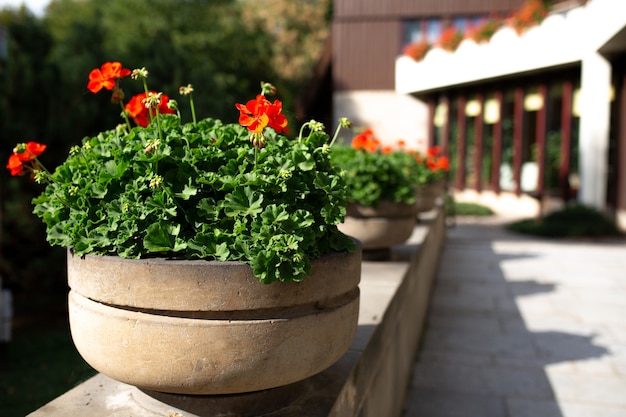
- Sunlight Variability: Different plants have different sunlight preferences, ranging from full sun to partial or full shade. Consider the specific light requirements of each plant when selecting them for your container garden.
- Plant Research: Gather information on sunlight needs from plant labels, gardening books, or reputable websites. This helps you make informed decisions about which plants to include in your garden based on available sunlight.
- Assessing Garden Sunlight: Observe sunlight patterns in your garden space throughout the day. Identify areas with full sunlight, partial shade, and full shade to determine the best placement for your containers.
- Strategic Placement: Position containers in areas that align with your plants’ sunlight requirements. Place sun-loving plants in spots with ample sunlight and shade-tolerant varieties in shadier areas to optimize growth and health.
- Seasonal Considerations: Keep in mind that sunlight patterns may change with the seasons. Adjust container placement as needed to accommodate seasonal variations in sunlight intensity and duration. Regularly monitor sunlight exposure to ensure plants receive adequate light for optimal growth.
Repotting and Transplanting: When and How to Upgrade Your Container Plants
Repotting and transplanting are crucial tasks in the maintenance of container plants, ensuring their continued growth and vitality. As plants mature, they inevitably outgrow their initial containers, necessitating the need for repotting or transplanting. The primary reason for repotting is to provide additional space for the roots to spread and establish a stronger foothold in the new container. This allows the plants to access more nutrients and water, resulting in healthier and more robust growth.

- Repotting:
- Signs: Repot when you observe crowded, circling roots, stunted growth, or top-heavy plants.
- Process:
- Choose a larger container with drainage holes.
- Prepare fresh potting mix (organic matter + balanced fertilizer).
- Gently remove the plant, place it at the same depth in the new container, and fill with potting mix.
- Water thoroughly to settle the soil.
- Transplanting:
- Purpose: Move a plant without disturbing its root system.
- When: Use when a larger pot isn’t available or for rearranging plants.
- Process:
- Carefully transfer the plant to a new container at the same depth.
- Fill with fresh potting mix, ensuring good root contact.
- Water after transplanting.
By repotting or transplanting container plants at the appropriate times, you are providing them with the necessary space and resources to thrive. This critical step in container gardening ensures that your plants can continue to flourish, producing beautiful foliage and vibrant blooms. Stay tuned for more useful tips and techniques as we explore different aspects of container gardening.
Seasonal Care: Adjusting Container Gardening Practices for Different Seasons
Seasonal care plays a crucial role in the success of container gardening. As the seasons change, the needs of our plants change as well. Understanding how to adjust our gardening practices accordingly can make a significant difference in the health and productivity of our container gardens.
| Seasonal Care in Container Gardening | Key Practices and Considerations |
|---|---|
| 1. Spring Preparation | – Inspect and Clean Containers: Check for damage and clean pots. |
| – Refresh Soil: Replace or supplement soil with fresh mix. | |
| 2. Summer Maintenance | – Watering Consistency: Adjust watering frequency for warmer weather. |
| – Provide Shade: Shield sensitive plants from intense sunlight. | |
| 3. Fall Transition | – Gradual Pruning: Trim back plants as they begin to slow down. |
| – Protect from Frost: Move sensitive plants indoors or provide cover. | |
| 4. Winter Precautions | – Insulate Containers: Wrap pots to protect roots from freezing. |
| – Reduce Watering: Scale back watering in response to plant dormancy. | |
| 5. Seasonal Plant Selection | – Choose Appropriate Varieties: Select plants suitable for each season. |
| – Rotate Crops: Change out plants to match the season’s conditions. | |
| 6. Fertilization Adjustments | – Seasonal Nutrient Needs: Adjust fertilization based on plant growth phases. |
| – Use Slow-Release Fertilizers: Provide nutrients over an extended period. |
Creative Container Gardening Ideas: Innovative Ways to Enhance Your Container Garden’s Aesthetic Appeal
Container gardening offers a multitude of opportunities to get creative and enhance the aesthetic appeal of your garden. By thinking outside the traditional plant pot, you can add a unique touch and make your container garden truly stand out.

Vintage Teapots: Use old teapots as charming planters. Their unique shapes and patterns add character to your garden.
Colorful Shoe Organizers: Hang shoe organizers on walls or fences, filling each pocket with soil and plants.
Reclaimed Wooden Barrels: Turn old wooden barrels into rustic planters. They’re perfect for larger plants or small trees.
Repurposing old items not only adds visual appeal but also promotes sustainability by giving new life to discarded objects.
Experiment with different container sizes, shapes, and materials to create an eclectic collection.
Maximize space by growing plants vertically:Vertical Trellises: Train climbing plants (like tomatoes or beans) on trellises against walls or fences.
Hanging Baskets: Hang flowering plants or herbs in baskets from hooks or beams.
Specialized Vertical Systems: Use modular vertical planters or living walls for a striking focal point.
Remember to balance aesthetics, functionality, and plant health for a thriving container garden! 🌿🌼🌱
Troubleshooting Common Container Gardening Issues: Overcoming Challenges to Ensure a Successful Container Garden
Container gardening is a popular and rewarding way to cultivate plants, but it is not without its challenges. Understanding and troubleshooting common container gardening issues is crucial to ensure the success of your garden.
- Overwatering Prevention: Avoid waterlogging and root rot by establishing a watering routine tailored to your plants’ needs and environmental conditions. Monitor soil moisture levels and allow slight drying between waterings to promote healthy root growth.
- Nutrient Deficiency Management: Container plants are prone to nutrient deficiencies due to limited access to soil nutrients. Regularly fertilize your plants with a balanced, water-soluble fertilizer formulated for container gardening to provide essential nutrients for healthy growth.
- Customized Watering: Adjust watering frequency based on plant requirements and environmental factors such as temperature and humidity. Consider factors like plant size, pot size, and drainage capabilities to determine the appropriate watering schedule.
- Fertilizer Selection: Choose a fertilizer specifically designed for container plants to address their unique nutritional needs. Look for balanced formulations containing essential nutrients like nitrogen, phosphorus, and potassium to support overall plant health.
- Monitoring and Adjusting: Keep an eye on your plants’ growth and health to identify any signs of nutrient deficiency or overwatering. Adjust your watering and fertilizing practices as needed to maintain optimal growing conditions and promote thriving container gardens.
However, it is important to follow the manufacturer’s instructions and avoid over-fertilization, as this can lead to nutrient burn and harm your plants. By addressing these common container gardening issues, gardeners can ensure the health and vitality of their plants, leading to a successful and bountiful container garden.
For more information watch video:
FAQ
How often should I water my container garden?
The frequency of watering depends on various factors such as the type of plants, container size, and weather conditions. As a general rule, check the moisture level of the soil regularly and water when the top inch feels dry.
Can I use regular garden soil for my container plants?
It is not recommended to use regular garden soil for container plants as it can become compacted and hinder proper drainage. Instead, opt for a high-quality potting mix specifically formulated for container gardening.
How do I prevent pests from infesting my container garden?
To prevent pests, regularly inspect your plants for signs of infestation. Remove any affected leaves or insects manually, and consider using organic pest control methods such as neem oil or insecticidal soaps. Additionally, practicing good hygiene by cleaning the containers and removing any fallen debris can help deter pests.
What should I do if my container plants become root-bound?
If your plants become root-bound, it is crucial to repot them into a larger container. Carefully loosen the roots and place the plant in a new container with fresh potting mix, ensuring there is ample space for the roots to grow and expand.
How can I protect my container plants during colder seasons?
During colder seasons, you can protect your container plants by moving them indoors or to a sheltered area, such as a greenhouse or a covered patio. Alternatively, insulating the containers with bubble wrap or providing a layer of mulch around the plants can help protect them from frost.
Can I use any type of fertilizer for my container plants?
It is important to use a fertilizer specifically formulated for container plants. These fertilizers typically contain a balanced mix of essential nutrients that cater to the specific needs of potted plants. Follow the instructions on the fertilizer packaging for proper application rates and timing.
How much sunlight do container plants need?
The amount of sunlight required varies depending on the plant species. However, most container plants thrive in areas with at least 6 hours of direct sunlight per day. Be sure to consider the specific sunlight requirements for each plant when determining the ideal placement for your container garden.
When should I repot or transplant my container plants?
You should consider repotting or transplanting your container plants when they outgrow their current containers or exhibit signs of root-bound growth. This typically occurs every 1-2 years, depending on the plant’s growth rate. The best time to repot is during the plant’s dormant stage or early spring before new growth begins.
How can I improve the aesthetic appeal of my container garden?
Enhance the aesthetic appeal of your container garden by incorporating creative elements such as decorative pots, trellises, or hanging baskets. You can also experiment with different plant combinations, textures, and colors to create visually appealing arrangements. Additionally, adding decorative accessories or incorporating vertical gardening techniques can further elevate the overall look of your container garden.

Studied Agricultural Engineering-Plant Protection at University of California, Davis.
Head of Content writing team at Southelmontehydroponics.com

